Contents
- 1. Actual spiritual practice according to the class
- 2. Comparison of the four classes
- 3. Determination of the class
- 4. Change in the class
- 5. Those excluded from the four classes
1. Actual spiritual practice according to the class
A. Spiritual practice means offering whatever one has unto God. A Shudra (labourer) should offer his body as he does not have anything else to offer by way of service. A Vaishya (businessman) should offer his body and wealth, a Kshatriya (warrior) his body, wealth and life and a Brahman (priest) his body, wealth, life as well as intellect for the Absolute Truth.
B. In the present times of the Kaliyug every person, to whichever class he may belong becomes a Brahman, Kshatriya, Vaishya and Shudra for some time of the day, as given in the table below.
| Class (varna) |
Duration of the class during the day % | ||||
| Brahman | Kshatriya | Vaishya | Shudra | Total | |
| Brahman | 40 | 30 | 20 | 10 | 100 |
| Kshatriya | 30 | 40 | 20 | 10 | 100 |
| Vaishya | 20 | 20 | 40 | 20 | 100 |
| Shudra | 20 | 20 | 20 | 40 | 100 |
Every individual is a Brahman when he studies, a Kshatriya when he fights according to the situation, a Vaishya when he earns a livelihood and a Shudra when he does some physical work like cleaning his body during a bath, for some time of the day. Hence, each one needs to undertake the spiritual practice of all the four classes for some time of the day.
If an employee in an office guides a subordinate appropriately then even though this is from the Great Illusion (Maya) it becomes spiritual practice of the Brahman class. Similarly if one gets a person receiving or giving a bribe apprehended and makes an effort to give him the due punishment then although this is a task from the Great Illusion it amounts to spiritual practice of a Kshatriya. Planning on how to fortify the financial resources of the office becomes spiritual practice of a Vaishya and obeying the instructions of one’s superiors in the office politely becomes spiritual practice of the Shudra (labourer) class. Even though this is so, one should do a little more spiritual practice of the class in which one is born and whose profession one practises.
C. The origin of the system of the four classes dates back to thousands of years ago. Since then till the present period nearly 70% of the population has been born of interclass marriages. For this reason too, each one needs to undertake spiritual practice of all the four classes for at least some time.
D. An individual is born in the class which is conducive for his spiritual progress. Hence, if a Shudra is rich as a result of his merits from previous births, his thinking that, ‘I will practise Spirituality by offering my wealth like a Vaishya’ is wrong. He must certainly offer his wealth, but according to his class he should also do physical service. As a result of performing service of both classes, instead of being born as a Vaishya (businessman) he may directly be born in a Kshatriya (warrior) or Brahman (priest) class, in his next birth.
E. If one undertakes the spiritual practice of one’s class appropriately and completely then in the next birth one is born in a higher class, e.g. if in this birth the spiritual practice of a Shudra is completed then in the next birth one may be born as a Vaishya. Later being born progressively as a Kshatriya and a Brahman one may ultimately attain the Final Liberation.
F. Individual spiritual practice, spiritual practice for the sake of society and the class (varna) : The table below gives the difference between individual spiritual practice and spiritual practice for the sake of society.
| Individual spiritual practice |
Spiritual practice for the sake of society |
|
| 1. Spiritual level of the seeker for whom it is possible % |
30 | 70 |
| 2. Highest spiritual experience |
Mostly Bliss, rarely Serenity |
Mostly Serenity |
| 3. Highest spiritual level % attainable |
70 | 100 |
It is not possible to undertake spiritual practice for the sake of society (samashti sadhana) without doing individual spiritual practice (vyashti sadhana); hence to make rapid spiritual progress a seeker should do both. Mainly Brahmans (priests) and Kshatriyas (warriors) can undertake spiritual practice for the sake of society. In case of a Brahman it involves teaching Spirituality to others while for a Kshatriya it is sacrificing even one’s life for the protection of the society, should the need arise.
2. Comparison of the four classes
| Brahman | Kshatriya | Vaishya | Shudra | |
| 1. The concerned part of the body |
Head | Both arms | Abdomen | Both legs from the waist downwards |
| 2. Right to perform the six actions (shatakarma) |
||||
| A. Study Spirituality |
+ | + | ||
| B. Preach Spirituality |
+ | |||
| C. Perform sacrificial fires |
+ | |||
| D. Guide at sacrificial fires |
+ | + | + | |
| E. Make offerings |
+ | + | + | |
| F. Accept offerings |
+ | + | ||
| 3. Number of days of seclusion during the mou- rning period (sutak) (Gautam Dharmasutra 14.1/4, Manu– smruti 5.83, etc.) |
10 | 11 | 12 | 30 |
| 4. Punishment for a misdeed |
||||
| A. Slander (abuse, criticism), e.g. criticism of a Brahman (Manusmruti 8.378, 8.267) |
A fine of 12 pans* if one accuses so- meone of theft, etc. & 24 pans if abuses are showered on someone |
A fine of 100 pans |
A fine of 150 pans |
Beating |
| B. E.g. Punishment to a Brahman for killing someone (Yadnyaval– kyasmruti 3.236, Manusmruti adhyay 11, Gautam Dharmasutra 22.14/16) |
Undertaking a vowed observance (vrat) for 12 years (living far away from home below a tree with matted hair & observing celibacy for 12 years) |
If a |
If a |
If a Shudra is killed then observing celibacy for a year or donating 10 cows and 1 ox |
| 5. Happiness, Unhappiness and Bliss |
||||
| A. Quantity of happiness and unhappiness |
Close to a spiritual level which transc- ends happin- ess and unhappiness |
Happiness is more than unhappiness |
Happiness is equal to unhappiness |
Unhappiness is more than happiness |
| B. Types of hapiness |
Sattvik | Rajasik | Rajasik | Tamasik |
| C. Happiness % | 20 | 40 | 35 | 30 |
| D. Unhappiness % | 10 | 20 | 35 | 50 |
| E. Bliss % | 20 | 0 | 0 | 0 |
| F. A neutral state without happiness or unhappiness % |
50 | 40 | 30 | 20 |
| 6. Quantity of destiny and spiritual practice (total 100%) |
||||
| A. Destiny % | 30 | 50 | 70 | 90 |
| B. Spiritual practice % |
70 | 50 | 30 | 10 |
| 7. Spiritual practice | ||||
| A. Main types of spiritual practice |
Path of Knowledge |
Path of Meditation |
Offering | Service |
| B. Others | External obj- ect of conte- mplation is unnecessary |
Achieving concentration of the mind by looking at an object (lakshavedh) listening to a word (shabdavedh) |
Can be viewed compara- tively |
Gross spiritual practice |
| 8. Offering in spiritual practice |
||||
| A Intellect | + | |||
| B. Life | + | + | ||
| C. Wealth | + | + | + | |
| D. Body | + | + | + | + |
| 9. Comparison of spiritual practice according to the class |
||||
| A. The minimal spiritual level re- required for spi- ritual practice % |
50 | 40 | 35 | 30 |
| B. Amount of annual spiritual progress % |
2 | 1 | 0.5 | 0.25 |
| C. The maximum spiritual level attainable % |
100 | 70 | 50 | 40 |
| 10. Quantity of individual spiritual practice and that for the sake of society(total 100%) |
||||
| A. Individual spiritual practice (vyashti sadhana) % |
30 | 40 | 90 | 99 |
| B. Spiritual practice for the sake of society (samashti sadhana) % |
70 | 60 | 10 | 1 |
| 11. In those with a sp- iritual level of 50% |
||||
| A. Oja [a precursor of effulgence (tej)] |
10 | 6 | 4 | 2 |
| 12. Ability to know which time period |
Beyond time | Past, present and future |
Past and present |
Present (does not think about past or future) |
| 13. Total amount in the Kaliyug % |
1 | 5 | 30 | 64 |
* Pan – An ancient coin with a value equivalent to eighty cowries.
3. Determination of the class
3.1 Difficulties in determination of the class
One has to be beyond the three components (gunatit) to recognise the qualities (gun) and actions (karma) of another. Only saints can do this but They too do not answer such queries and only recommend the appropriate spiritual practice.
3.2 Qualities are more important than the birth
यस्य यल्लक्षणं प्रोक्तं पुंसो वर्णाभिव्यंजकम् ।
यदन्यत्रापि दृश्येत तत्तेनैव विनिर्दिशेत् ।। – श्रीमद्भागवत ७.२१.३५Meaning: An individual should be classified in a particular class (varna) irrespective of his birth if he possesses the decisive characteristic of that class. One’s class should be decided considering the holistic picture of the qualities of the class of the person and those of the other classes. – Shrimadbhagvat 7.21.35
The Mahabharat says that an individual’s class should be determined by birth but in accordance with his qualities and only if he possesses those qualities should he be considered to belong to that particular class.
‘Discussing on the system of classes in the Mahabharat Dr. P.G. Sahasrabuddhe has concluded that though they considered the class by birth they did not judge the potential by birth. They did not even vaguely speak of a concept from the Manusmruti which is deleterious to the welfare of the society that a Brahman (priest) should be held in high esteem only because of his birth even if he were to abandon his duties. In the ancient times the Shudras (labourers) too could study the Vedas and could adopt the stage of the renunciant (sannyasi). The 63rd adhyay (chapter) of the Shantiparva recommends all the four stages of life (ashrams) even to the Shudra who has become pure (free from sin) with his own actions.’ (1)
3.3 The role played by castes in deciding the class (varna)
Due to the difficulty in deciding the class of a person castes began to gain importance. Consequently the authors of the Smrutis began to say that like the class the caste too is determined by birth. After the period of the Sutras the class began to be determined based on the birth. It is not possible for the common man to become a Brahman with the prowess of penance like Sage Vishvamitra. Hence a rule was laid down in the interest of maintaining happiness in society that caste should be decided by birth. The restrictions of class and caste have to be followed till Self-realisation is attained; thereafter one has to preach only about the classes and stages of life is what the authors of the Smrutis write.
3.4 It is important to decide whose class (varna) is being decided
‘Question: Is the class to be decided by birth or by action?
Shri Gulabrav Maharaj: Of the common man by birth and of sages by action (karma). Those who have transcended the awareness of the body and harbour the spiritual emotion of “He is I (so’ham)” are beyond the classes.’ – Sadhubodh page 167
4. Change in the class
According to the influence of the yug (era) every Kshatriya (warrior) who adopted the code of conduct of a Brahman (priest) eventually became one. All their descendants became Brahmans. Some of them became the proponents of the science of Yoga and others even wrote holy texts such as the Sanhitas. Some examples of a change in the class are as follows. A Brahman dynasty started from Gargya, son of Manyu when he accepted the code of conduct of a Brahman. Similarly all the three sons of King Duritakshay became Brahmans. Priyamedh and other sons of King Ajamel also became Brahmans. All of them were princes and their fathers were evolved souls. The king is considered as an embodiment of Lord Vishnu. The ancient kings would look after their subjects with compassion just like Lord Vishnu. Should the need arise they were even prepared to sacrifice their lives for the happiness of their subjects. They believed that that itself was the king’s greatest duty. Kshatriyas transformed into Brahmans were the sons of such kings (Chapter 22, skandha 9 of Shrimadbhagvat). Vedic literature gives an account of people such as Nabhanedishtha, Bhalandan and Vatsapri who were born Vaishyas (businessmen) and then became Brahmans. The Mahabharat says, ‘Even a chaste Shudra (labourer) can become a Brahman with his qualities and actions. A Brahman who does not perform any actions is inferior even to a Shudra’. ‘During those times sages and the Brahman community accepted them. This is called the influence of the yug.
However no one in the Kaliyug has the right to do such a thing. The class and caste are to be determined by birth itself. Sut has preached Purans such as the Shrimadbhagvat, etc. to sages like Shaunak. Sut’s father was a Brahman and His mother a Kshatriya. Sut called Himself a Shudra despite His being so evolved because He was born of a mother whose class was lower than that of His father. Nevertheless he was a close disciple of Shri Shukacharya and had received the mantle of His grace. The progeny being born of a father of a higher or lower class than his spouse are called anulom and pratilom respectively. They are not considered righteous. Yet all such progeny were entitled to realise God; because if Sut was not Self-realised then Shukacharya would never have accepted him as a close disciple.’ – H.H. Kane Maharaj, Narayangaon, Maharashtra
5. Those excluded from the four classes
5.1 Meaning
This refers to the class of people ouside the four classes.
5.2 Causes
A. According to Manu
Manu has said, ‘Even those of lowly class were born due to non performance of actions’.
1. शनकैस्तु क्रियालोपात् इमा: क्षत्रियजातय: ।
वृषलत्वं गता लोके ब्राह्मणादर्शनेन च ।।४३।।
पौण्ड्रकाश्चौंड्रद्रविडा: काम्बोजा यवना: शका: ।
पारदापह्लवाश्चीना: किराता दरदा खशा: ।।४४।। – मनुस्मृति, अध्याय १०Meaning: The different Kshatriya (warrior) castes such as Paundrak, Chaundra, Dravid, Kamboj, Yavan, Shak, Parad, Pahlav, Chini, Kirat, Darad and Khash became devoid of energy because they did not pay their respects to, rather because they dishonoured Brahmans and did not observe the duties of a Kshatriya. – Manusmruti, adhyay 10
2. मुखबाहुरुपज्जानां या लोके जातयो बहि: ।
म्लेच्छवाचश्चार्यवाच: सर्वे ते दस्यव: स्मृता: ।।४५।। – मनुस्मृति, अध्याय १०When Brahmans (priests), Kshatriyas, Vaishyas (businessmen) and Shudras (labourers) defaulted from their duties they were called dasyu is what the above verse (shloka) says according to the explanation by Kullukbhatt. It is incorrect to say that the three classes of the Brahman, Kshatriya and Vaishya belong to the Aryan race whereas the Shudra class does not and belongs to the dasyu clan.’
B. According to the Gurucharitra
1. Any kind of bad conduct results in birth as a Chandal [28:7].
2. One who worships deities other than the family deity and speaks the untruth (28:10)
3. One who forsakes his duties considering them to be base and undertakes duties of another nature, be he a Brahman (priest), Kshatriya (warrior), Vaishya (businessman) or a Shudra (labourer) is itself a Chandal (one born from a Shudra father and a Brahman mother). (28:37)
4. One who deserts his Guru, parents or wife (28:9)
5. One who kills without reason (28:11)
6. One who sells his own daughter (28:11)
5.3 One kind of those outside the classes – demons
‘In the Tretayug another class distinct from the four classes was created. This dreadful class was of the demons (asur, rakshas). However they are not referred to as a class (varna) because it would be demeaning to the terminology of class. Hence they are simply known as demons. These demons were so terrorising that they made all the subjects unhappy. They were not in the least concerned about spiritual progress and acquiring spiritual knowledge. They were ego, vanity, pride, anger, hypocrisy, egoism and desire personified. Their numbers swelled rapidly. The Brahmans (priests) allotted the task of destroying the demons to the Kshatriyas (warriors).’ (2)
Reference:
‘Varnashramvyavastha (System of classes and stages of life)’, published by Sanatan Sanstha.
Bharatiya Sanskrutikosh. Publisher: Pandit Mahadevshastri Joshi, Secretary, Bharatiya Sanskrutikosh Mandal, 410, Shanivar Peth, Pune 411 030.
First edition : Vol. 3 to 10
1. Vol. 7, Pg. 170-171Siddha Sanatan Sanskruti. Fourth edition – 20th July, 1997. Publisher: Gagangiri Publications, Yogashram, Khopoli, Taluka Khalapur, District Raigad.
2. Pg. 21

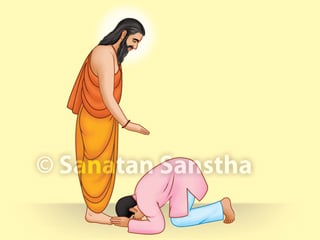
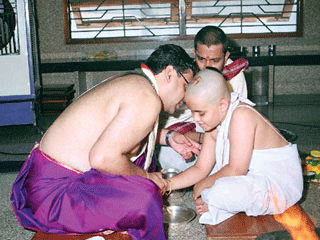 How does the system of stages of life help in attaining four pursuits?
How does the system of stages of life help in attaining four pursuits?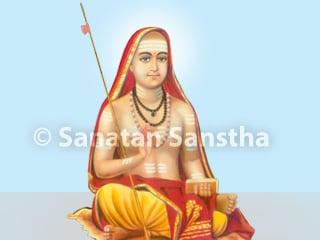 Why can't a renunciant stay in one place for more than three days?
Why can't a renunciant stay in one place for more than three days?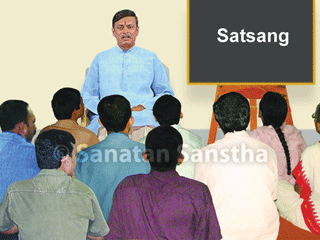 Why is humility a mandatory attribute for Brahman class?
Why is humility a mandatory attribute for Brahman class?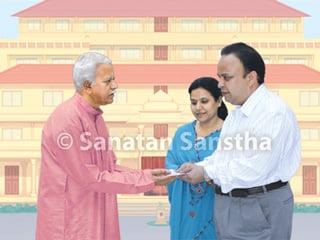 To whom should the offering be made?
To whom should the offering be made?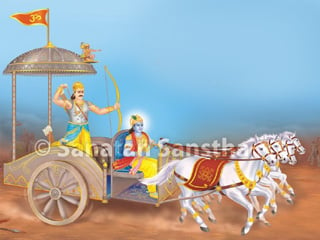 How did decline in righteousness cause creation of four classes?
How did decline in righteousness cause creation of four classes?